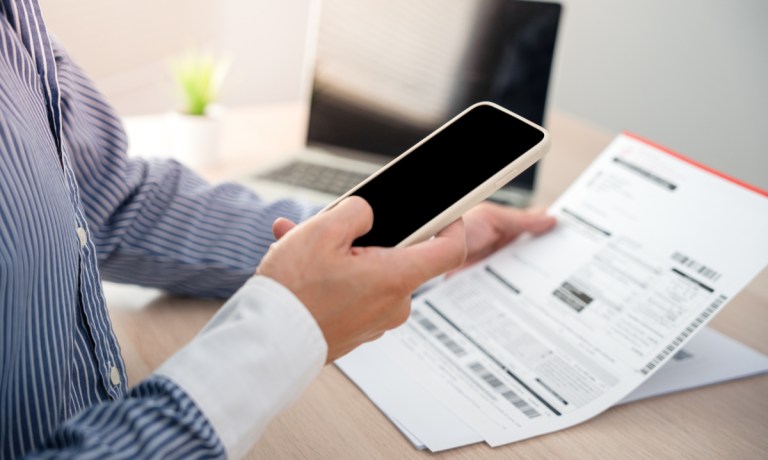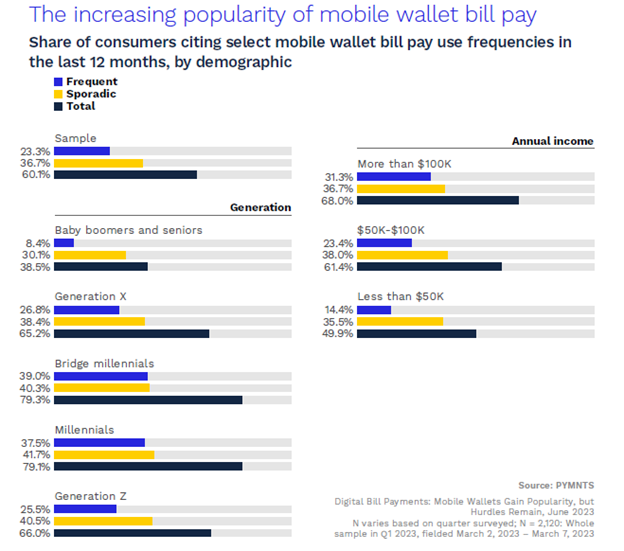
The popularity of digital bill payments is increasing as more and more consumers seek convenience and efficiency in managing their finances.
In “Digital Bill Payments: Mobile Wallets Gain Popularity, but Hurdles Remain,” a PYMNTS and ACI Worldwide collaboration, PYMNTS Intelligence leverages findings from a survey of over 2,100 U.S. consumers to assess their experiences with mobile wallet bill payments, including their preferences, pain points, and the developments they expect to see in the digital bill payment space.
The report, the second issue in a series exploring the present and future of digital payments, reveals that in March 2023, 60% of consumers reported using mobile wallets to pay their bills, a 22% increase from the previous year.
This trend was particularly prominent among high-income consumers, with usage increasing from 55% to 68% during the same period. Millennials were found to be the demographic most responsible for pushing mobile wallet bill payment into the mainstream, with nearly 80% of this cohort having used mobile wallets for bill payments in the 12 months prior to the study.
Likewise, both millennials and bridge millennials were found to have the highest rates of both frequent and occasional use of mobile wallet bill payments among all demographic segments, at 40% and 79%, respectively.
Following closely, Generation X — people born between the early 1960s and early 1980s — had the second-highest level of engagement, with around 38% classified as frequent users and 65% as sporadic users. Boomers, on the other hand, showed the least interest in mobile wallet bill pay, with just 30% using it frequently and about 38% using it occasionally.
Consumers cited the speed and convenience of mobile wallet bill payments as the main drivers for embracing this method. The ability to make instant payments on the due dates of bills was particularly appealing, with 39% of consumers considering it an important reason to use mobile wallets. In contrast to conventional payment modes such as bank transfers, which may take up to three days, mobile payments offer a significantly faster alternative, processing on the very day they’re initiated.
However, despite the growing popularity of mobile wallets for bill payments, there are still hurdles that need to be addressed. The survey found that 71% of consumers who frequently used mobile wallets for bill payments reported experiencing at least one issue.
Common operational issues included the inability to view all bills in one place or dispute a charge, while payment-related issues included limited payment options and the inability to make instant payments. Security concerns were also a significant factor, with 22% of consumers expressing worries about the security of mobile wallets.
To further increase adoption, mobile wallet providers need to address these hurdles. In fact, providers that offer strong security features and educate consumers about the existing security measures can attract more security-conscious individuals and retain existing customers, ultimately transforming the way consumers make bill payments.
In essence, mobile wallets are becoming increasingly popular for bill payments due to their speed and convenience. While hurdles such as operational issues and security concerns need to be addressed, the potential for further growth in mobile wallet usage for bill payments is promising as providers work to improve security features, educate consumers about existing security measures, and prioritize ease of use and speed.
